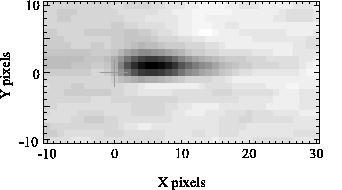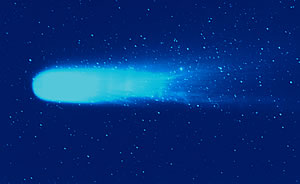 Star or Comet?Yesterday was a very long day at work. I was stuck in meetings with our collaborators for over 6 hours! To make it worse, we spent the entire time discussing a single topic. I even wrote my last paper on it. What could possibly be so captivating, you ask?
Star or Comet?Yesterday was a very long day at work. I was stuck in meetings with our collaborators for over 6 hours! To make it worse, we spent the entire time discussing a single topic. I even wrote my last paper on it. What could possibly be so captivating, you ask?
Remember the solar wind I wrote about a few weeks ago? This stream of protons does more than create comet tails and aurora, it also destroys all of those fancy electronics we work so hard to put into orbit.
The protons streaming from the sun carry a lot of energy, and they leave a lot of this energy behind as they pass through satellites and astronauts that don’t have the Earth’s atmosphere to protect them. The energy released wrecks havoc on the system, throwing electrons and atoms around like a game of ping-pong. This is one form of radiation damage.
 Definitely a comet!
Definitely a comet!
This radiation damage is harmless over short periods of time, much like an occasional X-ray at the dentist. However the solar wind becomes a problem for something like the Hubble Space Telescope or our proposed satellite SNAP which are exposed for many years.
To understand how a telescope degrades from exposure to radiation, let me give an extremely quick explanation of how we gather astronomical images. A telescope is very similar to a camera you buy in the store. The large mirror is equivalent to the lens on your camera. The part that suffers the most radiation damage is the Charge Coupled Device, also known as a CCD.
